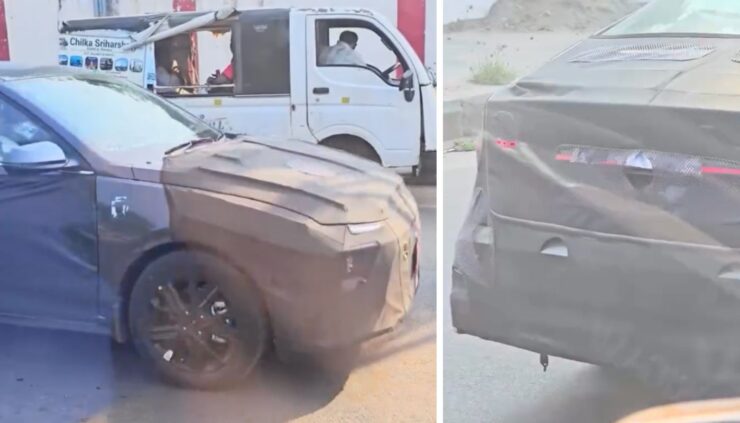The Hyundai Verna is one of the best-selling sedans in India and is all set to get a mid-cycle facelift. Recently, the test mule of the updated Verna was spied on Indian roads. The car was fully camouflaged both inside and outside, but some key updates could be spotted nonetheless. For the interior, it looks like Hyundai draws inspiration from the newly launched Venue that gets dual 12.3-inch curved screens. One of these will act as the infotainment unit while the other acts as the digital instrument cluster.
Auto Journal India shared the video of this test car on its Youtube channel. From what can be seen, the roof, alloy wheels, and D-pillar are similar to the current model. The rest of the exterior is fully covered up. As expected, the facelift will bring changes to the front and rear bumpers along with tweaks to the LED headlamps and taillamps. Alloy wheels on the test car were from the current model; however, production versions may get new design alloys.

Image Source – autojournal_india
The largest alteration in the Verna facelift will be inside. Other than the new dual curved display, it gets a redesigned D-cut steering wheel. The new steering wheel has a similar design as in the Hyundai Venue and gives a more premium feel inside this car. It will likely retain tilt and telescopic adjustment with mounted audio and Bluetooth controlsl.
The interior will feel more modern, clean, and functional- something the Verna needs at this point.

Image Source – autojournal_india
The engine lineup is said to remain unchanged. Buyers will continue to get a choice between the 1.5-litre MPi petrol developing 115 PS and 144 Nm or the 1.5-litre turbo petrol making 160 PS and 253 Nm. The transmission choices too will be carried over unchanged as well – a 6-speed manual, IVT and a 7-speed DCT for the turbo. No diesel variant is said to be expected on this facelift.
Presently, the Verna already boasts a 5-star Global NCAP rating. Hyundai is likely to improve the safety suite further with updated Level 2 ADAS features. These could include forward collision warning, blind-spot detection, lane keep assist, adaptive cruise control, high beam assist, and rear cross-traffic alert. In this way, the facelifted Verna will also keep its reputation as a safe and family-friendly sedan.
The facelifted Verna will go on sale by mid-2026. Prices may increase marginally by Rs 50,000 or so. When launched, the new Verna will face stiff competition from other stalwarts in the segment-the Honda City, Volkswagen Virtus, and Skoda Slavia. Meanwhile, there’s talk of a possible Verna N-Line version in the works aimed squarely at enthusiasts, but Hyundai has thus far not confirmed this.
Verna Facelift is all about bringing in a fresh and modern interior, smarter tech, and refined styling without much mechanical change. It remains a very compelling package for anybody seeking a dependable, safe, and well-appointed sedan with a dash of contemporary flair.

